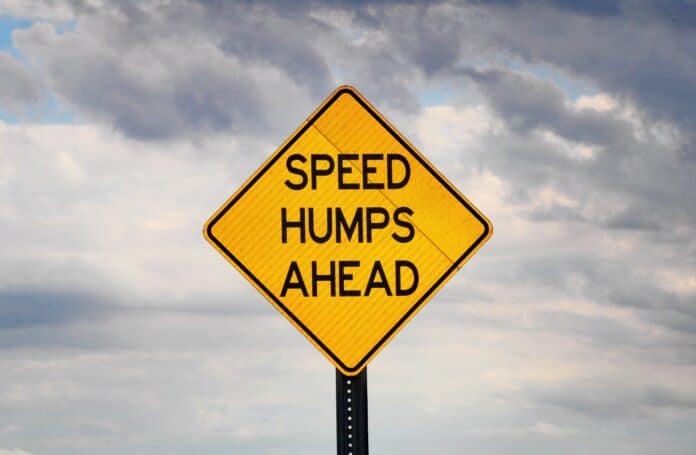The Brooksville City Council has approved a new policy regarding the use and location of speed humps throughout the city. The new policy replaces a scheme approved in April of 2007.
Under that policy, the city should install speed humps when average Daily Traffic (ADT) is less than 1500 vehicles per day, the 85th percentile speed is more than 10 miles-per-hour over the posted speed limit, the posted speed limit is 25 miles-per-hour or less, the street grade/slope is less than 10 percent and other overriding drainage or sight distance problems do not exist, and the proposed street is identified by emergency personnel as not being a direct thoroughfare to access other areas for emergency calls.
During the Nov. 6 regular City Council meeting, Community Development Director David Hainley laid out a plan to update the policy which would take into account the City’s population growth and the subsequent increased traffic in Brooksville’s neighborhoods.
“We found we have a 2007 speed bump policy which is woefully inadequate and doesn’t meet current standards,” he told the panel. “Therefore staff is urging the repeal of the 2007 policy and adoption of a 2023 policy which is much more technical and much more proactive.”
Under that new policy, neighborhoods would be polled and 60 percent of residents there must support speed hump installation. Owners whose property the speed hump fronts must specifically agree in writing to the construction of the speed hump. Also the property must have good drainage properties in order to qualify for the installation.
In general, speed humps are placed in a series 500 feet apart at property lines in order to minimize noise. Under the new policy they will generally be installed only on streets where the posted speed limit is 25 miles-per-hour or less.
Meanwhile, the installation of speed humps will be considered on streets where the majority of vehicles travel at relatively fast speeds, such as 45 miles-per-hour or greater, and on roads where the 85th percentile speed (an average of both directions) is at least ten miles-per-hour above the posted speed limit.
If the fire department objects to the installation of speed humps or speed tables on a particular street, the city manager will make the final decision about it.
Finally, funding for speed humps that meet the criteria contained in the policy will be based on the availability of city funding.
Hainley told the group that the new policy will set standards for future speed hump installations. “The new policy is going forward,” he said. “It does not mean changing existing speed hump locations.”
Finally, Vice Mayor Christa Tanner moved to approve the new policy. Council member Casey Thieryung seconded Tanner’s motion.
The policy was approved by 5-0 vote.

